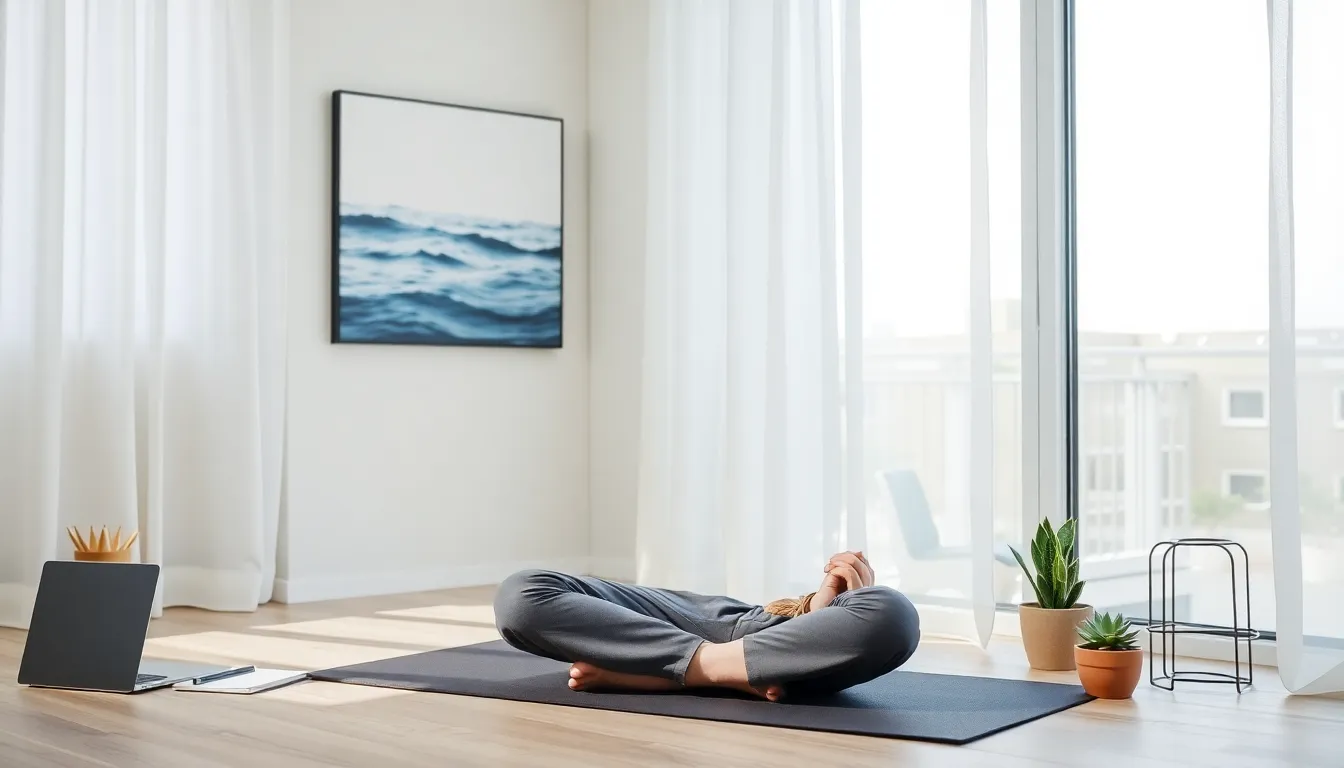Table of Contents
ToggleIn a world that moves faster than a caffeinated squirrel, slow living mindfulness offers a refreshing antidote. Imagine sipping your morning coffee while actually tasting it instead of guzzling it down like a racehorse at the finish line. This lifestyle isn’t just a trend; it’s a way to reclaim joy and presence in everyday moments.
Understanding Slow Living Mindfulness
Slow living mindfulness emphasizes a deliberate pace of life, fostering awareness and connection with daily experiences. Practitioners focus on savoring moments rather than rushing through them.
Definition and Key Concepts
Slow living mindfulness encourages individuals to embrace simplicity and presence. This approach advocates for intentional interactions with one’s surroundings, relationships, and inner thoughts. Key concepts include mindfulness, which promotes awareness of the present, and simplicity, which values quality over quantity. Engaging in activities such as enjoying nature or practicing gratitude enhances well-being. Adopting this lifestyle can lead to reduced stress and increased happiness.
Historical Background
The concept of slow living dates back to the 1980s and gained momentum in response to fast food culture. Initially rooted in the Slow Food movement, this philosophy sought to promote local, sustainable food systems. Over time, slow living evolved to encompass broader lifestyle choices, with mindfulness becoming a central tenet. Societal shifts, including technology’s rapid advancement, further fueled interest in this mindful approach to everyday life. Today, slow living mindfulness resonates with many seeking balance amidst chaos.
Benefits of Slow Living Mindfulness

Slow living mindfulness offers various benefits, enhancing both mental and physical well-being. Embracing this lifestyle fosters deeper connections and cultivates a healthier mindset.
Mental Health Advantages
Mental health gains emerge from practicing slow living mindfulness. Reducing anxiety emerges as individuals savor moments rather than rush through them. Enhancing focus occurs when one engages with the present, promoting clarity and creativity. Practicing gratitude improves emotional resilience, encouraging individuals to appreciate life’s simple pleasures. Engaging in mindfulness activities also boosts self-awareness, which leads to better emotional regulation. All these elements contribute to a more peaceful mindset, resulting in overall emotional stability.
Physical Health Benefits
Physical health improvements are another key aspect of slow living mindfulness. Stress reduction plays a crucial role, as deliberate breathing techniques promote relaxation and lower cortisol levels. Improved sleep quality results from decreased stress, allowing the body to recover and rejuvenate. Engaging in slow-paced activities, like walking in nature, encourages physical movement, enhancing fitness levels. Healthy eating becomes a priority, as individuals choose quality ingredients over convenience. Collectively, these practices lead to a stronger immune system and greater vitality.
Practical Tips for Incorporating Slow Living Mindfulness
Incorporating slow living mindfulness into daily routines enhances well-being and promotes presence. Practical tips make this transition smoother.
Daily Practices
Prioritize starting each day with a mindful morning routine. This may consist of savoring a cup of tea or coffee while appreciating the moment. Engage in deep breathing exercises for a few minutes to center thoughts and emotions. Set aside time for reflection at night, writing down moments of gratitude. Dedicating specific times for technology-free intervals encourages disconnection from distractions. Each action in daily life can also become a mindful experience, whether preparing meals or walking outside.
Mindful Activities
Explore activities that encourage mindfulness. Gardening can provide a serene way to connect with nature while staying present. Painting or drawing fosters creativity and helps express emotions. Taking nature walks allows individuals to appreciate surroundings and feel grounded. Journaling gives the opportunity to reflect on thoughts and feelings, contributing to mental clarity. Mindful eating, where meals are enjoyed without distractions, promotes a deeper connection with food and enhances overall satisfaction.
Challenges to Embracing Slow Living Mindfulness
Embracing slow living mindfulness presents various challenges. These challenges stem from external pressures and internal habits that can hinder the process of slowing down and being present.
Societal Pressures
Societal expectations often promote a fast lifestyle, where productivity equates to success. Many individuals feel compelled to keep up with rapid work demands and relentless social activities. This competitive environment discourages breaking away from the hustle. The constant barrage of notifications and social media updates further exacerbates stress, making it difficult to focus on the present. As mindfulness emphasizes presence and simplicity, these external influences create tension that undermines efforts towards a slower pace of life.
Overcoming Obstacles
Overcoming the challenges of slow living mindfulness requires intentional effort. Individuals can create structured routines to prioritize moments of tranquility and reflection. Setting specific time blocks for mindful activities fosters consistency and builds a habit. Practicing gratitude through daily journaling encourages an appreciation for present experiences. Limiting technological distractions, such as designated “phone-free” periods, helps cultivate a more peaceful environment. By establishing a supportive network, individuals can share their journeys and motivate each other, creating a community that values slow living mindfulness.
Embracing slow living mindfulness opens the door to a richer and more fulfilling life. By prioritizing presence and simplicity, individuals can cultivate deeper connections with themselves and their surroundings. This intentional approach not only enhances mental and physical well-being but also fosters a sense of peace in an increasingly chaotic world.
While challenges may arise in adopting this lifestyle, the rewards far outweigh the obstacles. With commitment and community support, anyone can integrate slow living mindfulness into their daily routine. As they savor each moment and find joy in the ordinary, they’ll discover a path to greater happiness and resilience.







